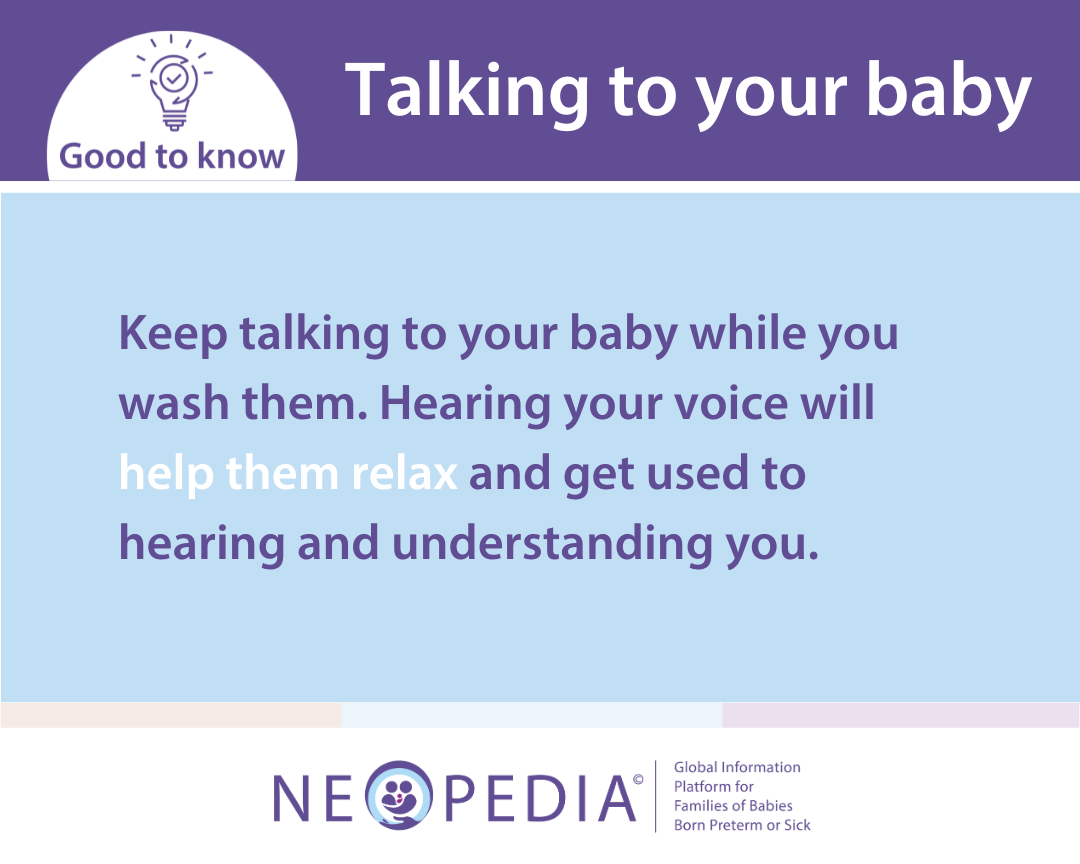
The nurses in the unit will likely show you some tips on how to gently care for your preterm baby, including how to give them a bath at home. If needed, ask the hospital healthcare team to use a doll to show you how to bathe your baby. This process is quite different from bathing full-term babies because of the unique needs of preterm ones.
A swaddle bath is often recommended to parents of preterm babies. This means that during bathing your baby is wrapped in a soft, thin, wet but not soaking blanket or towel. For some babies, bath time can be a bit overwhelming, so they might feel more comfortable if they are wrapped up. Make sure your baby's feet can always touch the bottom of the bathtub, as this can help them feel safe and confident.
The ideal water temperature for bathing is 37°C (98.6°F). Bathing your preterm baby is better than cleaning them with a flannel or washcloth because it is gentler on their skin. Bathing also has emotional benefits, as it promotes body contact between you and your baby and can help calm them down. You can bathe your baby two to three times a week, with each bath lasting about five to ten minutes. Keep the bath short, as preterm babies can struggle to keep warm for longer periods.
Most preterm babies find bathing in a baby bathtub (like a Tummy Tub, which is a special bucket for bathing) more enjoyable than in a regular-sized bathtub. The walls of the tub can remind them of the closeness and comfort they felt in the womb⍰. Many babies even fall asleep during their bath.
Use a pH-neutral bath gel that has skin-nourishing ingredients. During the bath, cover your baby's body with water, leaving their head and neck dry. You gently unwrap each part of the blanket to wash your baby’s skin, one area at a time. Go slowly and gently, talking or soothing your baby as you wash them. Start by cleaning the most sensitive parts, like their eyes. Gently wipe your baby’s eyes with a cotton ball or a clean corner of a soft cloth dipped in water. Use a fresh cotton ball or a clean section of the cloth for each eye to prevent spreading any germs⍰. Then, continue to wash the rest of your baby’s body with a mild baby cleanser, focusing on their neck, arms, and leg creases. Be gentle when rinsing, as babies can be startled easily. Avoid pouring water over your baby’s head or face.
After the bath, wrap your baby in a dry towel and gently pat their skin dry. Wet skin will promote heat loss even in a warm environment – this is why you should dry the skin after bathing immediately. If you notice any dryness on their skin, apply a mild cream or lotion that is a water-in-oil type. Babies enjoy the gentle touch of lotion on their skin. It is also a good idea to regularly moisturize all newborns, especially those with naturally dry skin. Make sure the products you use are free from perfumes, scents, preservatives, and parabens. Hold your baby skin-to-skin or wrapped in the warm towels. Once your baby is dry, gently dress them in warm layers to help them stay cozy. Talk to them or sing – bath time is a great chance to bond and help your baby feel relaxed and safe.

